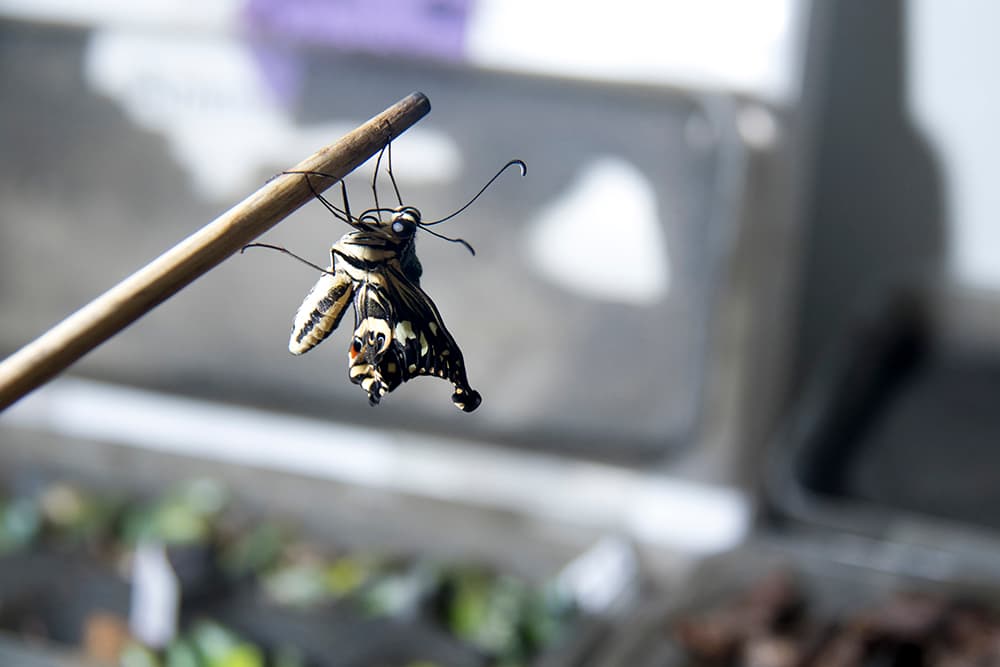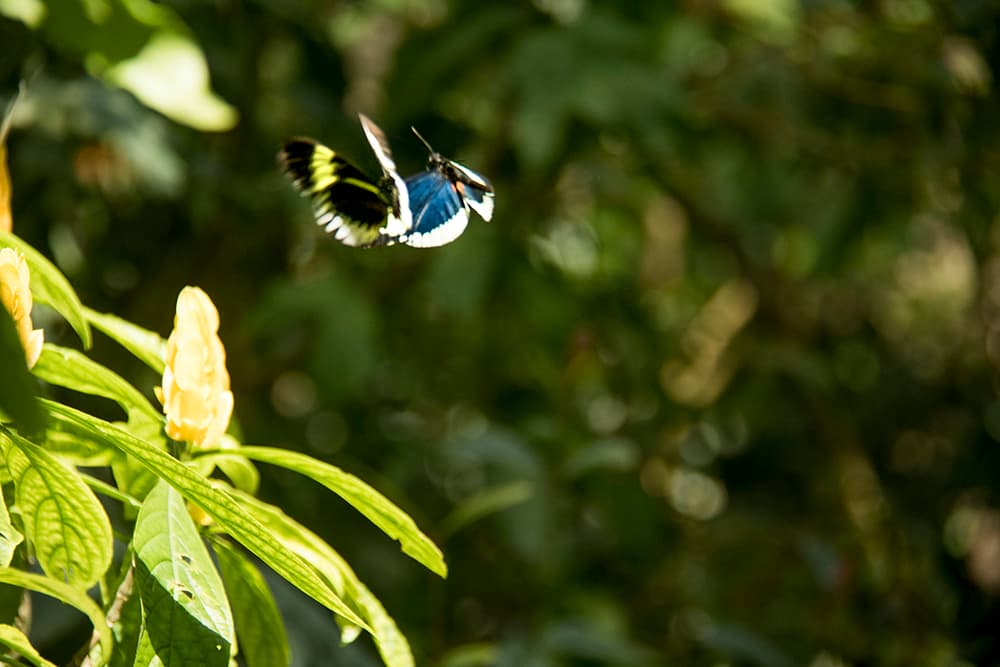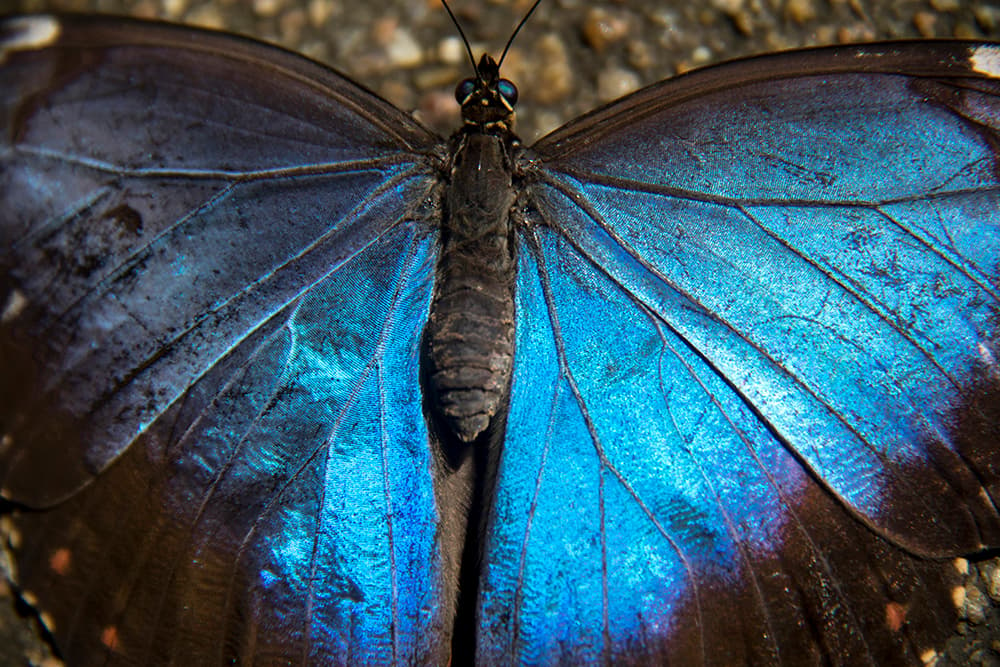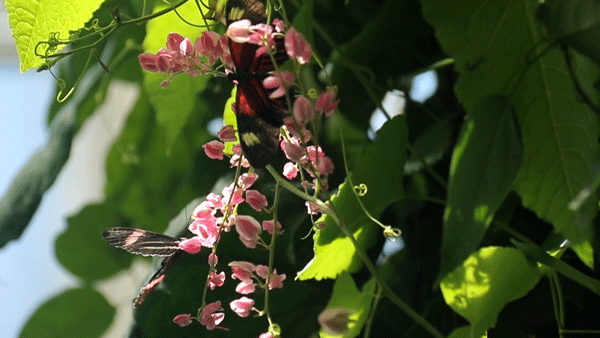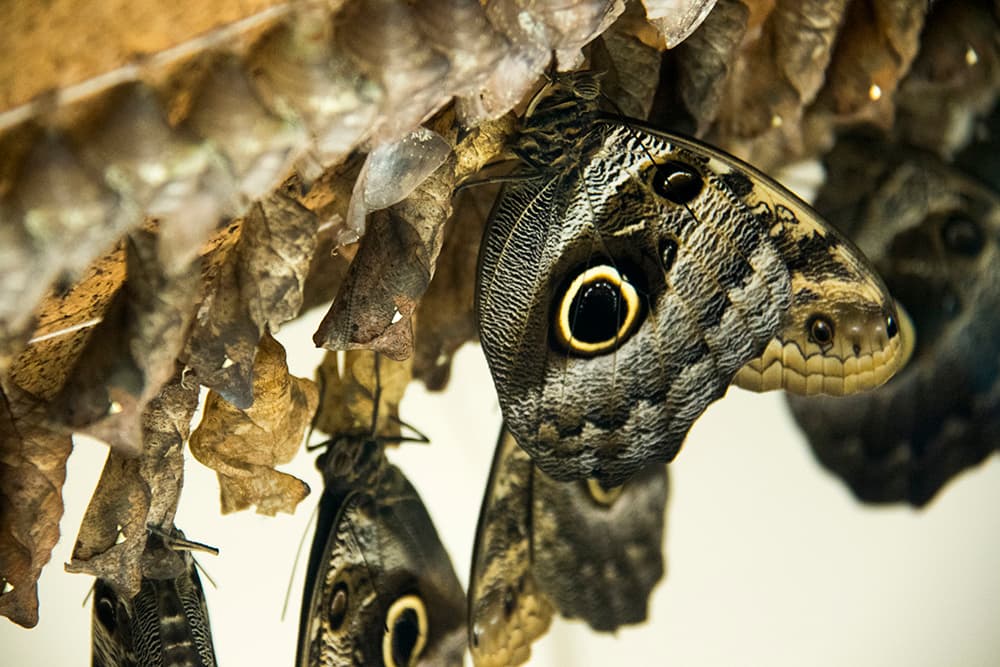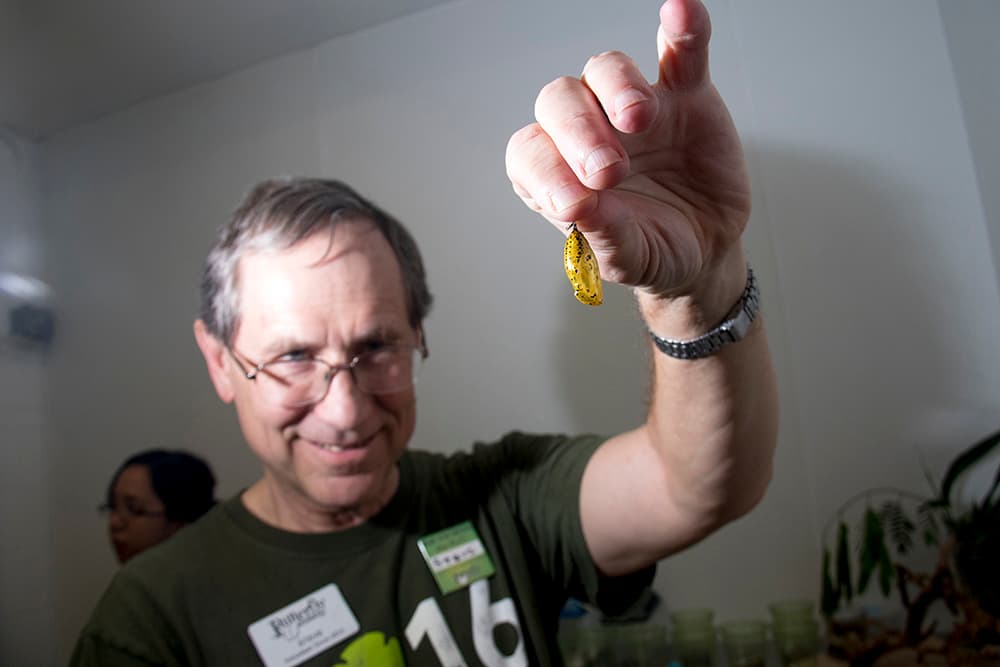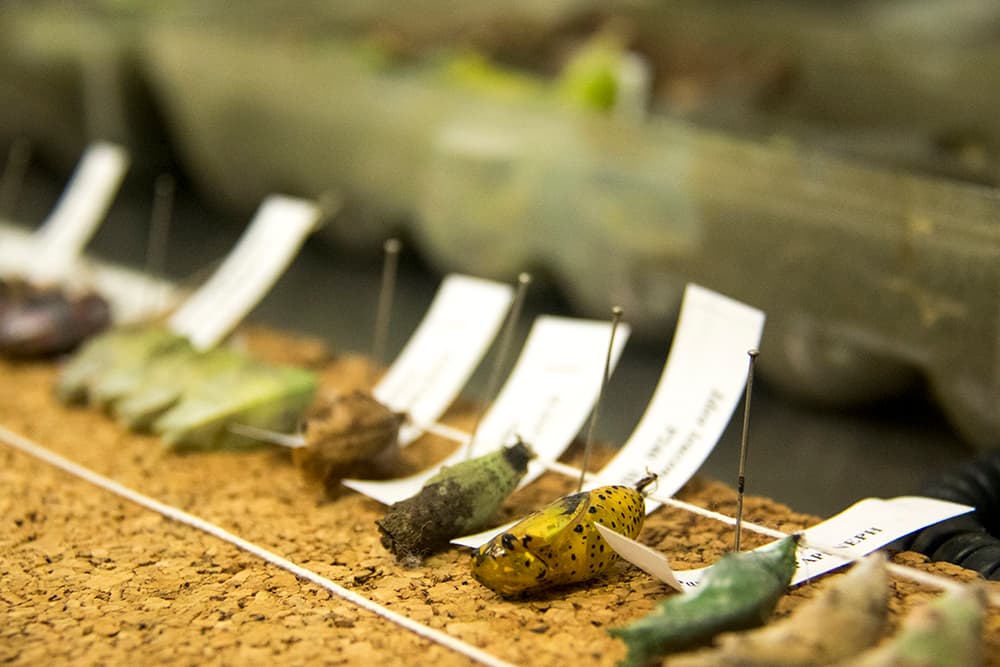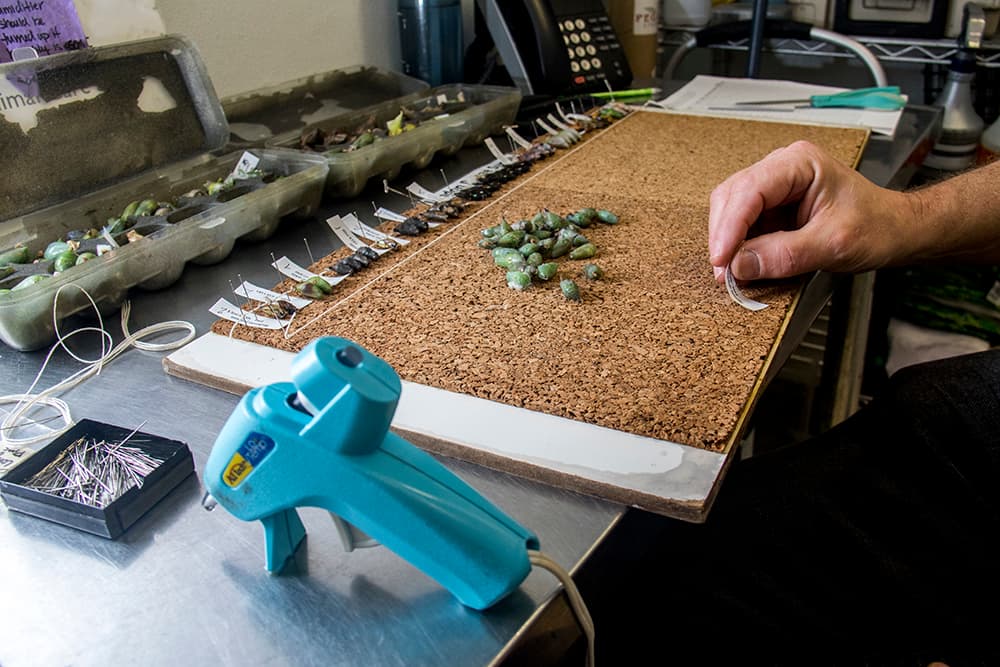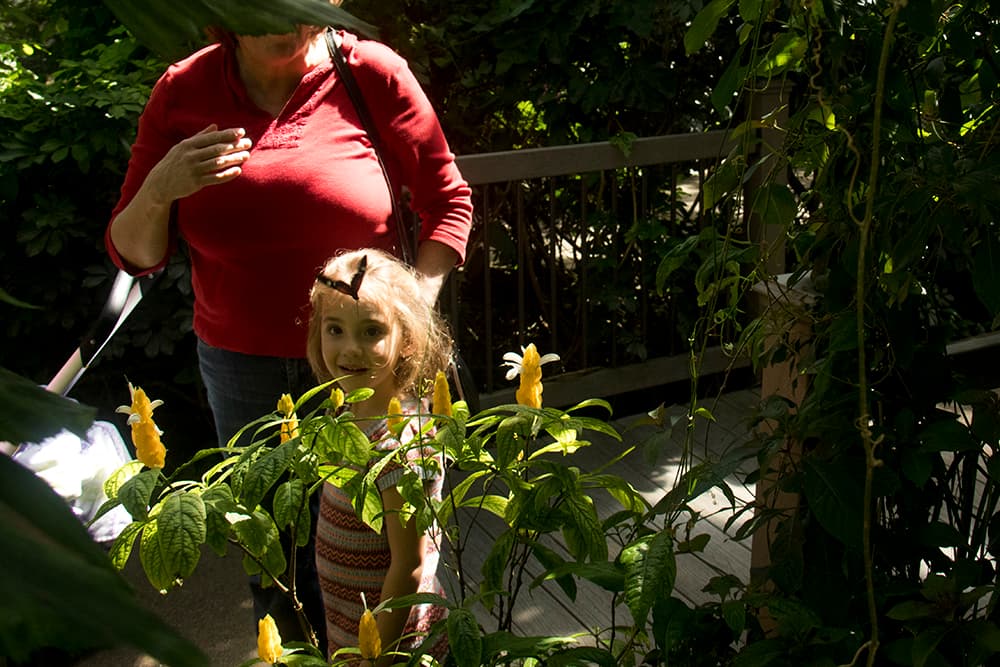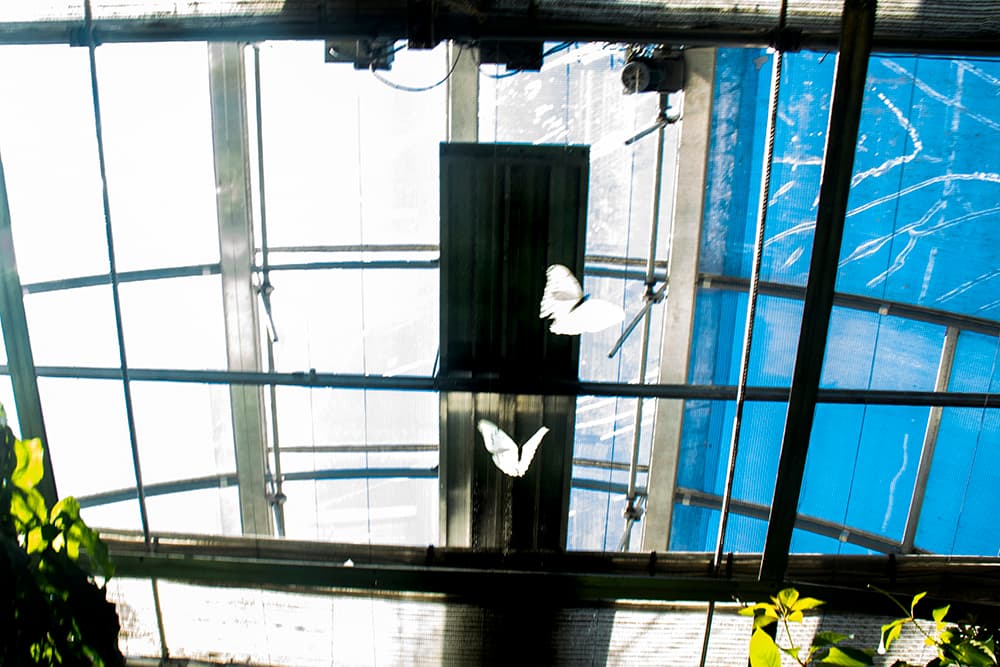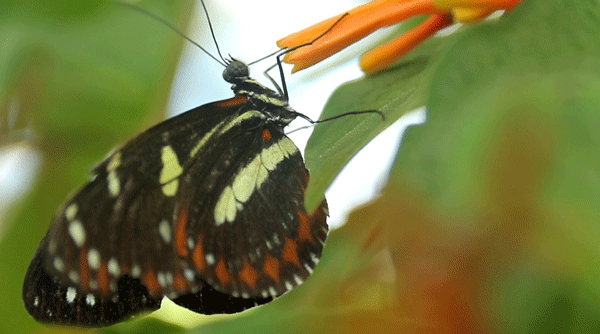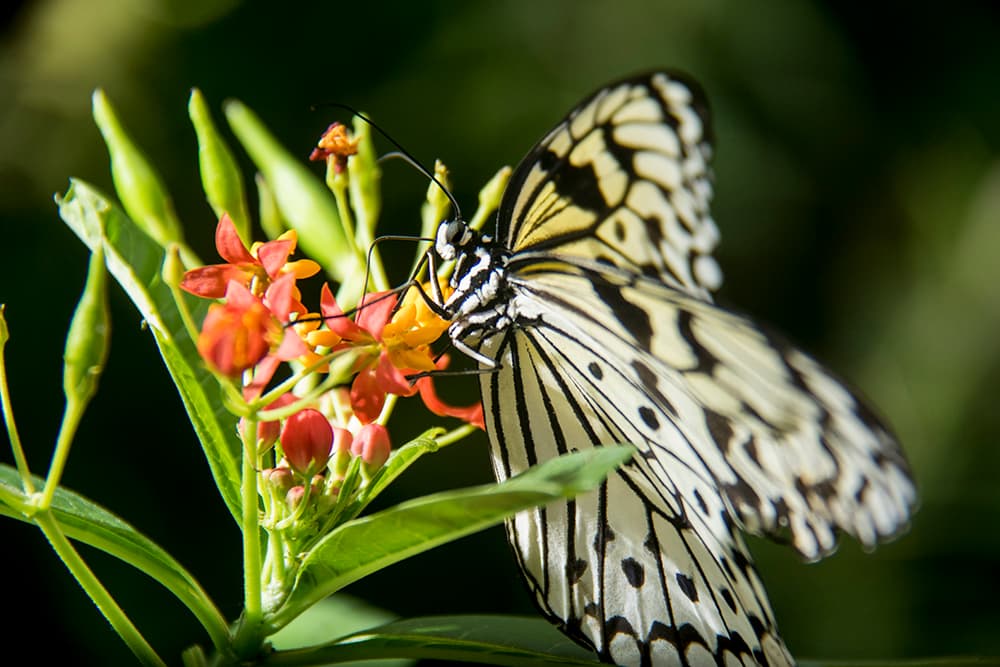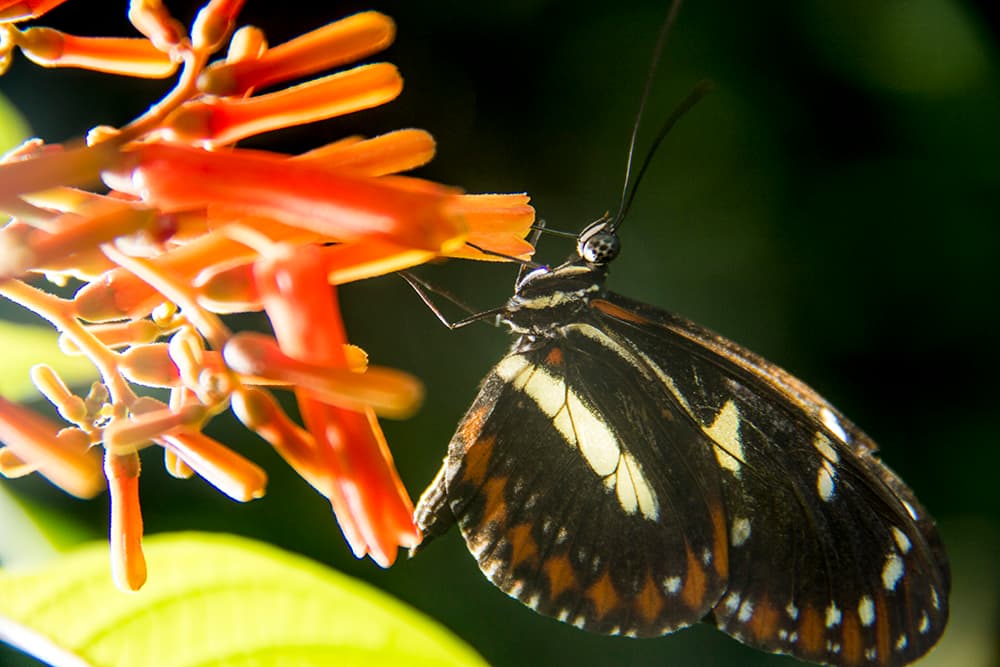
At any given moment, Westminster's Butterfly Pavilion is home to 1,600 fluttering beauties, with new specimens added every week. But this simulated rainforest is more than a pretty sight. It's a place for lepidopterists -- or butterfly scientists -- to explain how fragile creatures contribute to ecosystems everywhere.
Next month, the Butterfly Pavilion will open a smaller location with the Denver Botanic Gardens' at the gardens' Chatfield Farms location in Littleton. Inside, visitors will be invited to learn about the species that they can find in their own backyards.

“They’re beautiful, yes, but they’re also important," said Sarah Garrett, the Pavilion's in-house butterfly and moth biologist, as she walked among flying specimens.
Butterflies and other insects are right above plants in local food chains. The health of everything up the chain, from bug-eating frogs to frog-eating birds, depends on the butterflies' very existence.
“They’re perfectly positioned within the food web," said Garrett, "so that when you go out into an environment and you inventory what butterflies are there, you get a really good idea for that whole food web.”
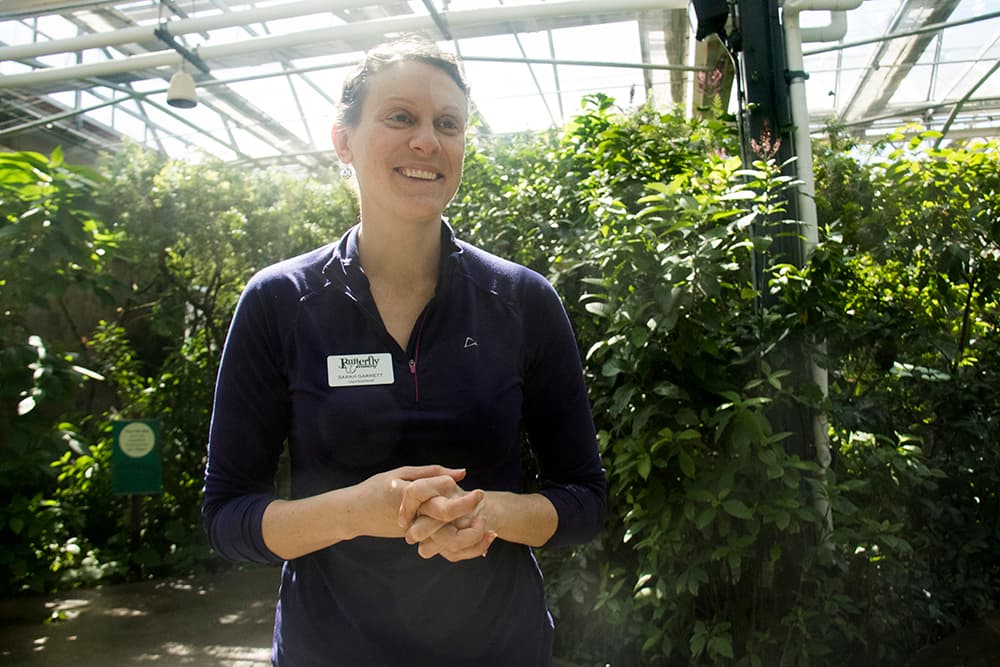
Garrett's work with butterflies extends out onto the Front Range, far beyond the specimens safe inside the Pavilion. In addition to her work with exotic species in Westminster, she is the director of the Colorado Butterfly Monitoring Network, one branch of a national network of citizen science programs.
Volunteers in the program take hikes on a set of trails around the state and make records of which species they see. The data they collect helps scientists like Garrett understand what butterfly species are present in Colorado, which in turn helps them understand the overall health of nearby ecosystems.
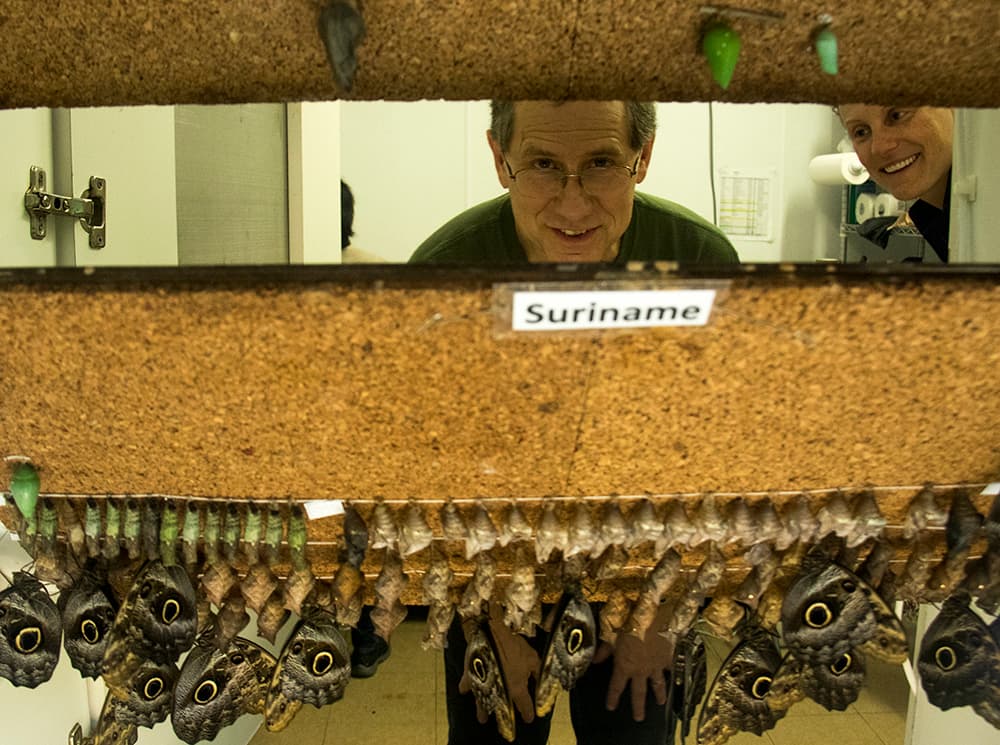
The program has only been in operation for four years -- not quite long enough to draw large conclusions. Even so, Garrett says she is beginning to see one trend: Biodiversity disappears the closer you get to urban centers.
Over time, such citizen science could help researchers understand whether or not ecosystems are improving around cities. These projects also inform scientists of larger global changes, such as rising average temperatures, that affect when plants bloom and when butterflies are spotted.
See for yourself:
The butterfly house opening at the Denver Botanic Gardens Chatfield Farm location is one way that you can get acquainted with Colorado species and learn about how to bring them to your own garden. The exhibit opens May 27.
If you're really keen on Colorado butterflies, you can attend a training with Sarah Garrett at the Butterfly Pavilion's main campus in Westminster on May 7.
UPDATE: This story originally said the Butterfly Pavilion houses 16,000 butterflies at any given time. That number is actually 1,600.
